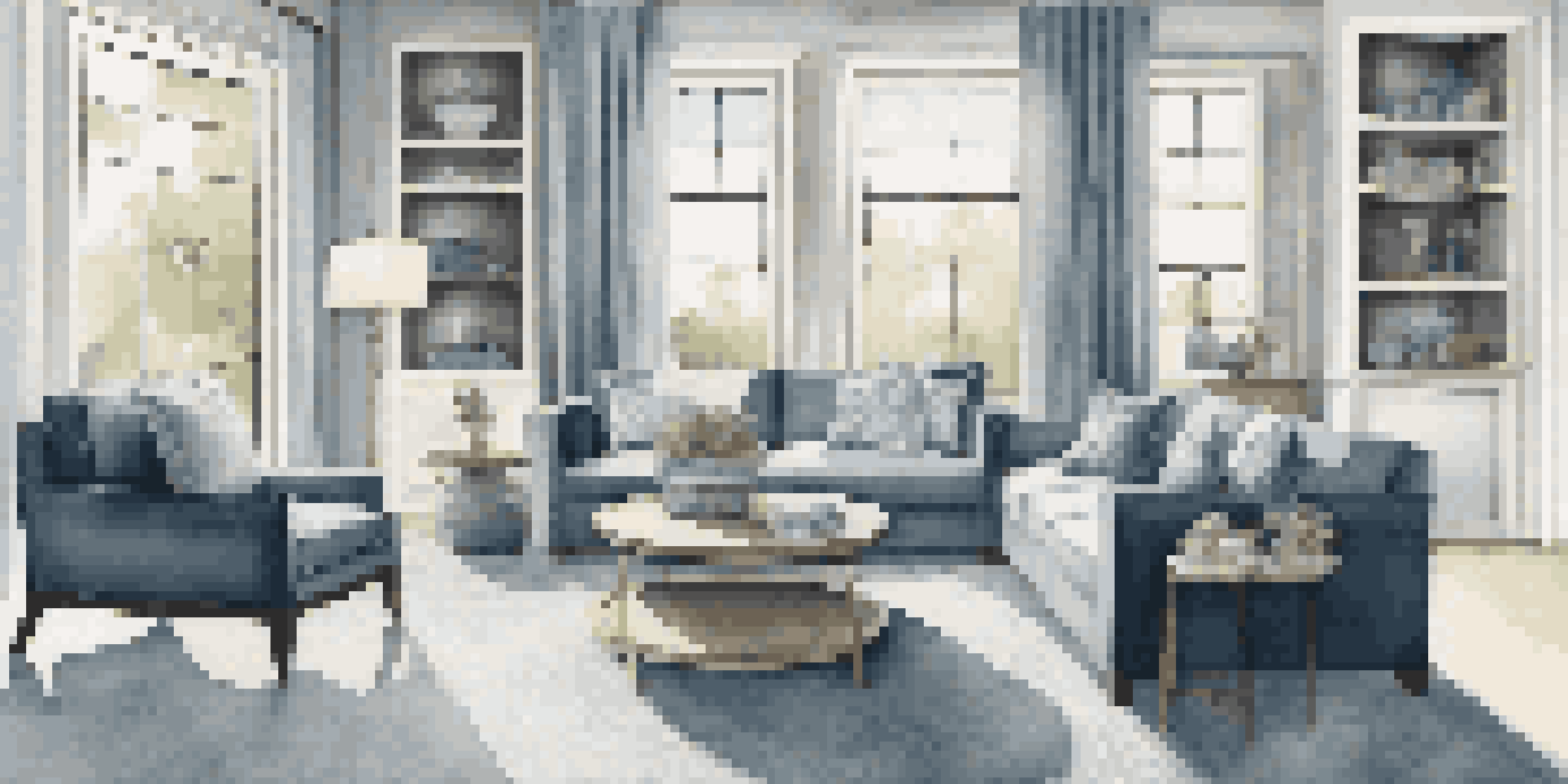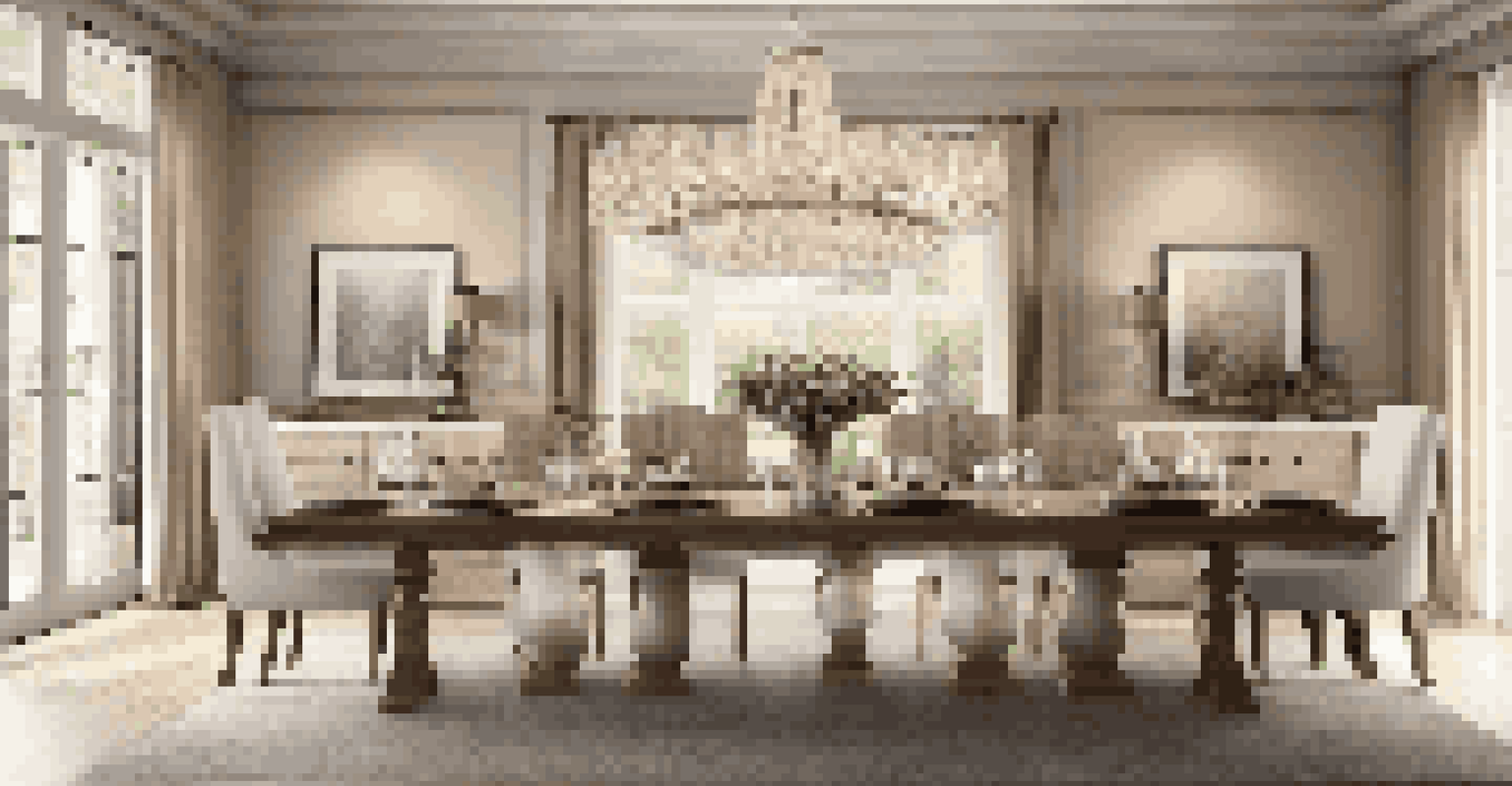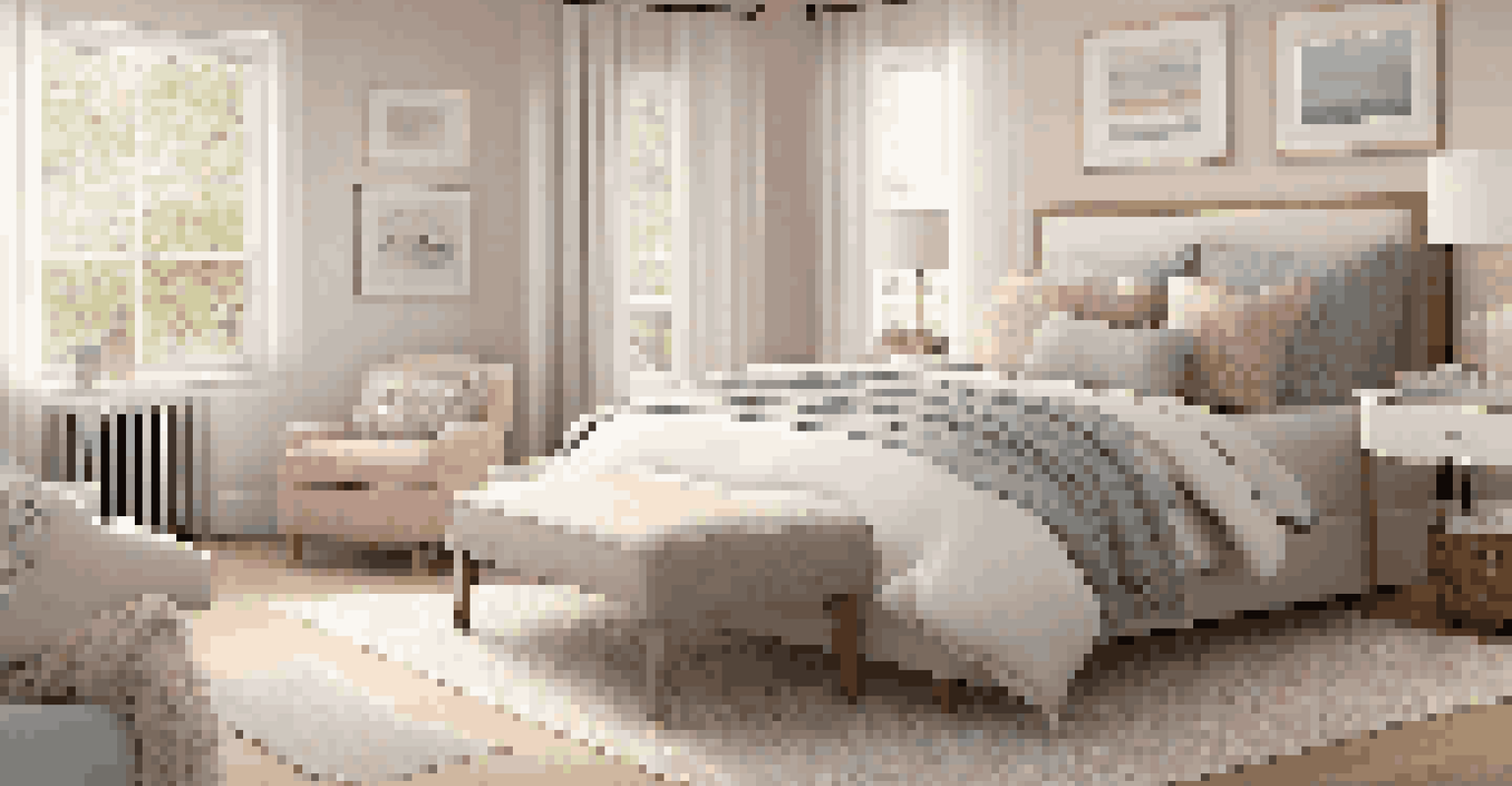How to Create a Cohesive Design Throughout Your Home

Understanding the Importance of Cohesive Design
Cohesive design is like a well-conducted orchestra, where every element works together to create a beautiful symphony. A unified look throughout your home not only enhances aesthetic appeal but also promotes a sense of comfort and belonging. Imagine walking into a space where colors, textures, and styles flow seamlessly; it’s inviting and makes a lasting impression on guests.
Design is not just what it looks like and feels like. Design is how it works.
When your design is cohesive, it tells a story about who you are and how you live. Each room should feel connected to the next, reflecting a consistent style that resonates with your personality. This doesn’t mean every space has to look identical; rather, it’s about creating a harmonious dialogue between different areas of your home.
To achieve this, start by identifying key elements that will serve as your design foundation. These could be colors, materials, or shapes that you love. By establishing these core components, you can ensure that every room contributes to the overall narrative of your home.
Choosing a Color Palette that Unifies
Color is one of the most powerful tools in design, capable of setting the mood and connecting spaces. Selecting a cohesive color palette is essential for creating flow throughout your home. Think of it as the thread that weaves through your design, tying together everything from your living room to your bedroom.

Start by choosing a primary color that resonates with you, then select a few complementary shades to add depth and interest. For example, if you love soft blues, consider pairing it with whites and grays for a serene, coastal vibe. This not only creates a soothing atmosphere but also ensures that each room feels related yet distinct.
Don’t be afraid to incorporate bold accents or patterns, but be sure they align with your overall palette. A well-chosen throw pillow or piece of artwork can add character without straying from your color story, helping to maintain that cohesive look you’re striving for.
Incorporating Textures for Depth
While color brings visual harmony, texture adds depth and richness to your design. Mixing different textures can create a warm and inviting atmosphere, making spaces feel more dynamic. Imagine the contrast of a soft velvet couch paired with a sleek wooden coffee table; it’s this interplay that captivates the eye.
The details are not the details. They make the design.
To achieve a cohesive look, consider how textures can complement your chosen color palette. Soft linens, rugged woods, and shiny metals can all coexist in a balanced design. For instance, if you have a predominantly soft color scheme, introducing a few textured elements—like a chunky knit blanket or a woven rug—can elevate the overall ambiance.
Remember, the goal is to create a tactile experience that entices the senses. As you layer these textures throughout your home, the result will be a warm, inviting space that feels both cohesive and engaging.
Selecting Furniture that Complements Your Style
Furniture plays a crucial role in defining the character of each room, and choosing pieces that align with your overall design is essential. Think of furniture as the building blocks of your home’s aesthetic; they should echo the style you've established through color and texture. Whether you prefer modern minimalism or cozy rustic charm, your choices should reflect this vision.
To maintain cohesion, opt for furniture that shares similar lines, materials, or finishes. For example, if you have a contemporary style, sleek furniture with clean lines will harmonize beautifully. Conversely, if your home leans towards a bohemian vibe, consider eclectic pieces that tell a story and complement one another.
Additionally, consider the scale of your furniture in relation to your space. Properly sized pieces will ensure a balanced look, enhancing flow and function. By thoughtfully selecting your furniture, you can solidify the cohesive design you desire throughout your home.
Creating a Focal Point in Each Room
Every room benefits from a focal point—a feature that draws the eye and anchors the space. This could be a stunning piece of artwork, a unique light fixture, or even a fireplace. Having a focal point creates a sense of organization and purpose within the room, contributing to your home’s cohesive aesthetic.
When designing, consider how each focal point connects with the overall theme of your home. For instance, if your living room features a bold painting, you might choose complementary colors in the surrounding decor to tie it all together. This way, each focal point reinforces your cohesive design rather than competing for attention.
Remember, a well-placed focal point can also influence the layout of your furniture. Arrange seating and other elements to enhance the visibility of this feature, ensuring it remains a prominent aspect of your cohesive design.
Utilizing Accessories to Tie Spaces Together
Accessories are the finishing touches that can elevate your design from good to great. Think of them as the jewelry of your home—small details that can make a big impact. By thoughtfully selecting accessories, you can enhance your cohesive design while adding personality to each space.
Start by choosing accessories that reflect your chosen color palette and overall style. This might include decorative pillows, vases, or artwork. For example, if your home has a coastal theme, consider incorporating seashells or ocean-inspired decor to reinforce that aesthetic.
Don’t shy away from mixing different types of accessories; just ensure they share a common thread. Whether it’s a color, texture, or theme, these small elements can create a sense of unity throughout your home, making it feel thoughtfully designed and cohesive.
Maintaining Cohesion Across Different Spaces
As you move throughout your home, maintaining cohesion can be a balancing act, especially when dealing with different room functions. The key is to create a thread of connection among spaces while allowing for some individuality. This approach ensures that each room feels like part of a larger story without sacrificing its unique character.
One effective method is to use common elements—like a consistent color palette or shared materials—across different areas. For instance, if you use a specific wood finish in your kitchen, consider incorporating it in your living room furniture as well. This creates visual links that help spaces feel cohesive.

Additionally, pay attention to the flow between rooms. Open floor plans can particularly benefit from this strategy, as a seamless transition from one space to another enhances the cohesive feel. By keeping these connections in mind, you can create a harmonious home that feels well-designed and inviting.